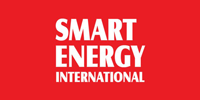
California, the world’s fifth largest economy and a global innovation engine, is confronting ambitious clean energy and GHG reduction goals. California must achieve 60% renewable energy and 5 million electric vehicles on the road by 2030, and a fully decarbonised power sector by 2045.
Energy storage solutions will be required to support the state in its decarbonisation efforts for renewables integration, grid reliability, local area support, fire resiliency, microgrids, and more. Indeed, the state’s utility regulator, the California Public Utilities Commission (CPUC), modelled the need for at least 10,000MW of deployed energy storage over the next 10 years – a staggering amount.
With so much energy storage procurement coming, our relatively young industry is entering a new phase in its market development arc, moving from project development to long term operations. In February 2020, prior to the global response to the COVID-19 epidemic, the California Energy Storage Alliance (CESA) held its annual convening of CESA members, policy makers, regulators, environmental advocates, utilities and load serving entities, grid operators to take a headline view of the future, and specifically, “The Next 10 Years.”
What would the energy storage headline be for 2030?
Will it be: “California faces rolling blackouts and record prices as state flubs climate goals?” or “California Achieves 60% Carbon-Free Grid with 11,000+ MW of deployed energy storage and spurs economic boom”?
‘What you focus on is what you get’
As the industry matures over the next decade, CESA is striving for the latter, and there is a lot of work to do. Financing and contracting mechanisms will require certainty. Owners and operators will have to contend with and master vital functions including long-term operations, ongoing market participation, scheduling, maintenance. From a safety perspective, the state has work to do on streamlining the process for safe siting and permitting of these systems, as well as training first responders in how to deal with systems designed to hold very large quantities of energy.






Recent Comments